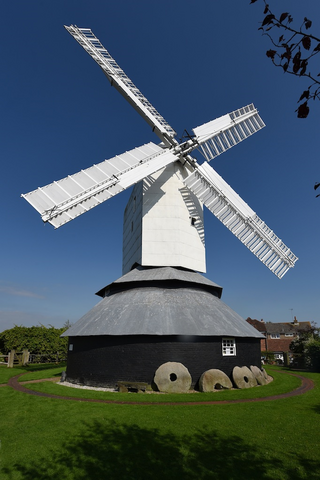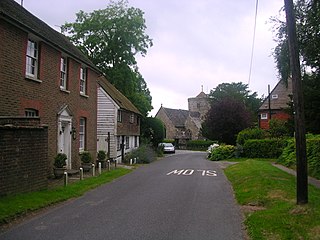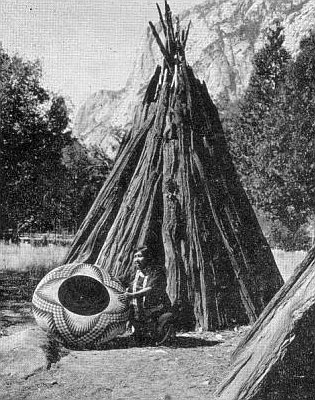
Willows, also called sallows and osiers, of the genus Salix, comprise around 350 species of typically deciduous trees and shrubs, found primarily on moist soils in cold and temperate regions.

Coppicing is the traditional method in woodland management of cutting down a tree to a stump, which in many species encourages new shoots to grow from the stump or roots, thus ultimately regrowing the tree. A forest or grove that has been subject to coppicing is called a copse or coppice, in which young tree stems are repeatedly cut down to near ground level. The resulting living stumps are called stools. New growth emerges, and after a number of years, the coppiced trees are harvested, and the cycle begins anew. Pollarding is a similar process carried out at a higher level on the tree in order to prevent grazing animals from eating new shoots. Daisugi, is a similar Japanese technique.

Pollarding is a pruning system involving the removal of the upper branches of a tree, which promotes the growth of a dense head of foliage and branches. In ancient Rome, Propertius mentioned pollarding during the 1st century BC. The practice has occurred commonly in Europe since medieval times, and takes place today in urban areas worldwide, primarily to maintain trees at a determined height or to place new shoots out of the reach of grazing animals.

Horsham is a census place in Horsham Township, Montgomery County, Pennsylvania, United States. The population was 15,193 at the 2020 census. It is home to the Biddle Air National Guard Base at the former site of Naval Air Station Joint Reserve Base Willow Grove.

Salix alba, the white willow, is a species of willow native to Europe and western and central Asia. The name derives from the white tone to the undersides of the leaves.

A digging stick, sometimes called a yam stick, is a wooden implement used primarily by subsistence-based cultures to dig out underground food such as roots and tubers, tilling the soil, or burrowing animals and anthills. It is a term used in archaeology and anthropology to describe similar implements, which usually consists of little more than a sturdy stick which has been shaped or sharpened and sometimes hardened by being placed temporarily in a fire.

Herstmonceux Castle is a brick-built castle, dating from the 15th century, near Herstmonceux, East Sussex, England. It is one of the oldest significant brick buildings still standing in England. The castle was renowned for being one of the first buildings to use that material in England, and was built using bricks taken from the local clay, by builders from Flanders. It dates from 1441. Construction began under the then-owner, Sir Roger Fiennes, and was continued after his death in 1449 by his son, Lord Dacre.

Herstmonceux is a village and civil parish in the Wealden District of East Sussex, England, which includes Herstmonceux Castle.

Balcombe is a village and civil parish in the Mid Sussex District of West Sussex, England. It lies 31 miles (50 km) south of London, 16 miles (26 km) north of Brighton, and 32 miles (51 km) east-northeast of the county town of Chichester. Nearby towns include Crawley to the northwest and Haywards Heath to the south-southeast.

Ardingly is an English village and civil parish in the Mid Sussex district of West Sussex, England. The village is in the High Weald Area of Outstanding Natural Beauty about 33 miles (53 km) south of London and 33 miles (53 km) east-north-east of the county town of Chichester. The parish covers an area of 3,974 acres (1,608 ha). The 2011 Census recorded a population of 1,936 an increase from 1,833 in 2001.

Basket weaving is the process of weaving or sewing pliable materials into three-dimensional artifacts, such as baskets, mats, mesh bags or even furniture. Craftspeople and artists specialized in making baskets may be known as basket makers and basket weavers. Basket weaving is also a rural craft.
Ansty and Staplefield, previously Cuckfield Rural, is a civil parish in the Mid Sussex District of West Sussex, England, covering an area from the north-west side of Burgess Hill, the whole lying around but mostly to the west of Cuckfield civil parish, from which it was created in 1894 under the Local Government Act 1894. It includes the settlements of Ansty in the south, Staplefield to the north-west and Brook Street to the north-east. It is the largest civil parish in West Sussex, covering an area of 3,869 hectares (14.94 sq mi), and has a population of 1574, increasing to 1,756 at the 2011 Census.

Horsham is a market town on the upper reaches of the River Arun on the fringe of the Weald in West Sussex, England. The town is 31 miles (50 km) south south-west of London, 18.5 miles (30 km) north-west of Brighton and 26 miles (42 km) north-east of the county town of Chichester. Nearby towns include Crawley to the north-east and Haywards Heath and Burgess Hill to the south-east. It is the administrative centre of the Horsham district.

Woodmancote is a village and civil parish in the Horsham District of West Sussex, England. The village is 1 mile (1.5 km) southeast of Henfield on the A281 road. It should not be confused with the other West Sussex village of Woodmancote near Chichester.

The Willows and Wetlands Visitor Centre is situated at Stoke St Gregory, on the Somerset Levels, north east of Taunton, England. Based on a working farm, growing and processing willow, the centre offers tours of over 80 acres (0.13 sq mi) of withies, willow yards and basket workshops and explains the place of willow in the history of the Levels.

Horsham Museum is a museum at Horsham, West Sussex, in South East England. It was founded in August 1893 by volunteers of the Free Christian Church and became part of Horsham District Council in 1974. It is a fully accredited museum and serves both Horsham and its district with the support of the Friends of Horsham Museum and an active volunteer base.

Horsham Unitarian Church is a Unitarian chapel in Horsham in the English county of West Sussex. It was founded in 1719 to serve the large Baptist population of the ancient market town of Horsham—home of radical preacher Matthew Caffyn—and the surrounding area. The chapel's congregation moved towards Unitarian beliefs in the 19th century, but the simple brick building continued to serve worshippers drawn from a wide area of Sussex. It is one of several places of worship which continue to represent Horsham's centuries-old tradition of Protestant Nonconformism, and is the town's second oldest surviving religious building—only St Mary's, the parish church, predates it. English Heritage has listed the chapel at Grade II for its architectural and historical importance.

The International Inventions Exhibition was a world's fair held in South Kensington in 1885. As with the earlier exhibitions in a series of fairs in South Kensington following the Great Exhibition, Queen Victoria was patron and her son Albert Edward, the Prince of Wales, was president of the organising committee. It opened on 4 May and three and three-quarters of a million people had visited when it closed 6 months later.
Symbols of Sussex are the objects, images or cultural expressions that are emblematic, representative or otherwise characteristic of Sussex or Sussex culture. As a rule, these symbols are cultural icons that have emerged from Sussex folklore and tradition, meaning few have any official status. However, most if not all maintain recognition at a county or national level, and some, such as the emblem of Sussex, have been codified in heraldry, and are established, official and recognised symbols of Sussex.
Founded in the 1780s, Köhler & Son were independent makers of brasswind instruments in London until they were bought by Swaine & Adeney in 1907.

















